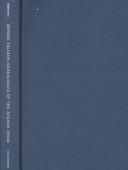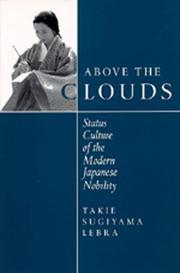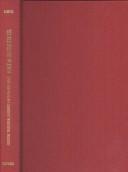| Listing 1 - 5 of 5 |
Sort by
|
Book
Year: 2020 Publisher: Basel Schwabe Verlag
Abstract | Keywords | Export | Availability | Bookmark
 Loading...
Loading...Choose an application
- Reference Manager
- EndNote
- RefWorks (Direct export to RefWorks)
Zwar ist die literarische Gattung der «Autobiographie» eine neuzeitliche Erfindung, doch schrieben bereits politische Akteure in der späten römischen Republik über ihr Leben und verorteten dieses im Zusammenhang mit den politischen Veränderungen der Zeit. Die Autorin untersucht exemplarisch das life writing Ciceros und des Augustus, um Bedingungen, Strukturen und Ziele des Schreibens über den eigenen Lebenslauf zu eruieren. Sie nimmt sowohl De vita sua-Schriften und commentarii als auch andere Textsorten in den Blick und zeigt, wie die Autoren mit Form und Inhalt experimentierten, um ihr Ansehen bei den Zeitgenossen durch die Festschreibung grosser Taten zu heben und die Erinnerung an diese fortdauern zu lassen. Die Untersuchung verdeutlicht, dass Texte des life writing jeweils eng mit dem politischen Kontext verbunden waren. Zudem werden die Strategien offensichtlich, mit denen der Lebenslauf abhängig von den geltenden sozialen Normen sinnhaft konstruiert wurde.
life writing --- life story --- Autobiografie --- Cicero --- Augustus --- römische Republik --- Prinzipat --- Nobilität

ISBN: 0520228596 0520228618 1282758926 0520926870 9786612758928 1597344850 9780520926875 1417520256 9781417520251 052090060X 9780520900608 9781597344852 9780520228597 9780520228610 9781282758926 Year: 2002 Publisher: Berkeley : University of California Press,
Abstract | Keywords | Export | Availability | Bookmark
 Loading...
Loading...Choose an application
- Reference Manager
- EndNote
- RefWorks (Direct export to RefWorks)
In this powerful book, David B. Edwards traces the lives of three recent Afghan leaders in Afghanistan's history--Nur Muhammad Taraki, Samiullah Safi, and Qazi Amin Waqad--to explain how the promise of progress and prosperity that animated Afghanistan in the 1960's crumbled and became the present tragedy of discord, destruction, and despair. Before Taliban builds on the foundation that Edwards laid in his previous book, Heroes of the Age, in which he examines the lives of three significant figures of the late nineteenth century--a tribal khan, a Muslim saint, and a prince who became king of the newly created state. In the mid twentieth century, Afghans believed their nation could be a model of economic and social development that would inspire the world. Instead, political conflict, foreign invasion, and civil war have left the country impoverished and politically dysfunctional. Each of the men Edwards profiles were engaged in the political struggles of the country's recent history. They hoped to see Afghanistan become a more just and democratic nation. But their visions for their country were radically different, and in the end, all three failed and were killed or exiled. Now, Afghanistan is associated with international terrorism, drug trafficking, and repression. Before Taliban tells these men's stories and provides a thorough analysis of why their dreams for a progressive nation lie in ruins while the Taliban has succeeded. In Edwards's able hands, this culturally informed biography provides a mesmerizing and revealing look into the social and cultural contexts of political change.
Heads of state --- Islam and politics --- Chefs d'Etat --- Islam et politique --- Biography --- Biographies --- Tarah'kåi, Nåur Muòhammad --- Safi, Samiullah --- Waqad, Qazi Amin --- Afghanistan --- Politics and government --- Politique et gouvernement --- Afghanistan-- History-- Saur Revolution, 1978. --- Safi, Samiullah. --- Amin, Qazi Muhammad. --- History --- Tarahʹkåi, Nåur Muòhammad --- Qazi Muhammad Amin --- Samiullah Safi --- Soviet Union --- SOCIAL SCIENCE / Anthropology / Cultural & Social. --- 1960s. --- 20th century. --- afghanistan. --- biographical. --- civil war. --- cultural studies. --- drug trafficking. --- economics. --- economy. --- history. --- international terrorism. --- islam. --- life story. --- middle east. --- middle eastern history. --- middle eastern. --- muslim. --- nur muhammad taraki. --- political conflict. --- politics. --- progress. --- qazi amin waqad. --- repression. --- samiullah safi. --- social change. --- social development. --- social progress. --- social studies. --- taliban. --- terrorism. --- true story. --- world history.

ISBN: 1282758691 9786612758690 0520911792 0585106029 9780520911796 9780585106021 9780520076006 0520076001 0520076001 9780520076020 9781282758698 Year: 1993 Publisher: Berkeley, CA : University of California Press,
Abstract | Keywords | Export | Availability | Bookmark
 Loading...
Loading...Choose an application
- Reference Manager
- EndNote
- RefWorks (Direct export to RefWorks)
This latest work from Japanese-born anthropologist Takie Sugiyama Lebra is the first ethnographic study of the modern Japanese aristocracy. Established as a class at the beginning of the Meiji period, the kazoku ranked directly below the emperor and his family. Officially dissolved in 1947, this group of social elites is still generally perceived as nobility. Lebra gained entry into this tightly knit circle and conducted more than one hundred interviews with its members. She has woven together a reconstructive ethnography from their life histories to create an intimate portrait of a remote and archaic world.As Lebra explores the culture of the kazoku, she places each subject in its historical context. She analyzes the evolution of status boundaries and the indispensable role played by outsiders.But this book is not simply about the elite. It is also about commoners and how each stratum mirrors the other. Revealing previously unobserved complexities in Japanese society, it also sheds light on the universal problem of social stratification.
Nobility --- Japan --- Social life and customs --- Manners and customs --- J4201 --- J4000.70 --- Ceremonies --- Customs, Social --- Folkways --- Social customs --- Traditions --- Usages --- Civilization --- Ethnology --- Etiquette --- Rites and ceremonies --- Japan: Sociology and anthropology -- communities -- social classes and groups -- upper class, elite --- Japan: Social history, history of civilization -- Kindai (1850s- ), bakumatsu, Meiji, Taishō --- E-books --- Noblesse --- Japon --- Moeurs et coutumes --- 1940s. --- academic. --- anthropologist. --- anthropology. --- class structure. --- classism. --- cultural context. --- cultural. --- elite. --- ethnographic. --- ethnography. --- high class. --- historical context. --- interviews. --- japanese anthropology. --- japanese aristocracy. --- japanese culture. --- japanese history. --- japanese nobility. --- japanese society. --- kazoku. --- life story. --- meji period. --- modern japan. --- nobility. --- scholarly. --- social stratification. --- social structure. --- social studies. --- true story. --- world history.
Book
ISBN: 981195755X 9811957541 Year: 2022 Publisher: Singapore : Springer Nature Singapore : Imprint: Springer,
Abstract | Keywords | Export | Availability | Bookmark
 Loading...
Loading...Choose an application
- Reference Manager
- EndNote
- RefWorks (Direct export to RefWorks)
This Open Access book is intended for common readers who are interested in the life story of Qian Xuesen (also know as Tsien Hsue-Shen). Based on a large number of original archives and historical materials, this book focuses on Qian Xuesen’s years of seeking knowledge from his birth in 1911 to his return to China in 1955 and describes how he grows into a world-known scientist from the aspect of humanity. This book can be used as reference material for Qian Xuesen’s earlier years.
History of science --- Asian history --- Impact of science & technology on society --- Astronomy, space & time --- Life Story of Qian Xuesen --- Qian Xuesen Biography --- Chinese Scientist --- The Father of Chinese Missiles --- Family Education --- Qian Xuesen --- Hsue-Shen Tsien --- National Chiao Tung University --- Theodore von Kármán --- Jiang Ying --- Father of Chinese Rocketry --- King of Rocketry --- “Two Bombs, One Satellite” --- Chinese Nuclear Weapons Program --- Tsien Jun-fu --- Shanghai Jiao Tong University --- Return to China from the US --- Physicists—Biography. --- Astronomers—Biography. --- China—History. --- Physics—Study and teaching. --- Physics—History. --- Biographies of Physicists and Astronomers. --- History of China. --- Education in Physics. --- History of Physics and Astronomy.

ISBN: 0520228170 0520228189 0520935764 1282359479 1597348996 9786612359477 9780520935761 9781597348997 9781282359475 9780520228177 9780520228184 0585465983 9780585465982 Year: 2002 Publisher: Berkeley, Calif. : University of California Press,
Abstract | Keywords | Export | Availability | Bookmark
 Loading...
Loading...Choose an application
- Reference Manager
- EndNote
- RefWorks (Direct export to RefWorks)
The makers of obi, the elegant and costly sash worn over kimono in Japan, belong to an endangered species. These families of manufacturers, weavers, and other craftspeople centered in the Nishijin weaving district of Kyoto have practiced their demanding craft for generations. In recent decades, however, as a result of declining markets for kimono, they find their livelihood and pride harder to sustain. This book is a poignant exploration of a vanishing world. Tamara Hareven integrates historical research with intensive life history interviews to reveal the relationships among family, work, and community in this highly specialized occupation. Hareven uses her knowledge of textile workers' lives in the United States and Western Europe to show how striking similarities in weavers' experiences transcend cultural differences. These very rich personal testimonies, taken over a decade and a half, provide insight into how these men and women have juggled family and work roles and coped with insecurities. Readers can learn firsthand how weavers perceive their craft and how they interpret their lives and view the world around them. With rare immediacy, The Silk Weavers of Kyoto captures a way of life that is rapidly disappearing.
Weavers --- Silk weaving --- Silk industry --- Work and family --- Tisserands --- Soie --- Travail et famille --- Filature --- Industrie --- J4458 --- -Silk weaving --- -Weavers --- -Work and family --- -Families and work --- Family and work --- Families --- Dual-career families --- Work-life balance --- Artisans --- Weaving --- Silk manufacture and trade --- Textile industry --- Japan: Economy and industry -- manufacturing and production -- textile and clothing --- Nishijin (Kyoto, Japan) --- Silk industry. --- Silk weaving. --- Silk weaving - Japan - Kyoto. --- Weavers. --- Weavers-- Japan-- Kyoto. --- Work and family. --- Business & Economics --- Labor & Workers' Economics --- -Japan: Economy and industry -- manufacturing and production -- textile and clothing --- Families and work --- academic. --- career. --- craftsmen. --- dying art. --- economic. --- economics. --- endangered species. --- fabric workers. --- family life. --- generational. --- historical. --- interviews. --- japanese culture. --- japanese fashion. --- kimono. --- kyoto. --- life history. --- life story. --- manufacturers. --- market. --- relationships. --- scholarly. --- supply and demand. --- textile workers. --- true story. --- weavers. --- weaving. --- work. --- workplace.
| Listing 1 - 5 of 5 |
Sort by
|

 Search
Search Feedback
Feedback About UniCat
About UniCat  Help
Help News
News